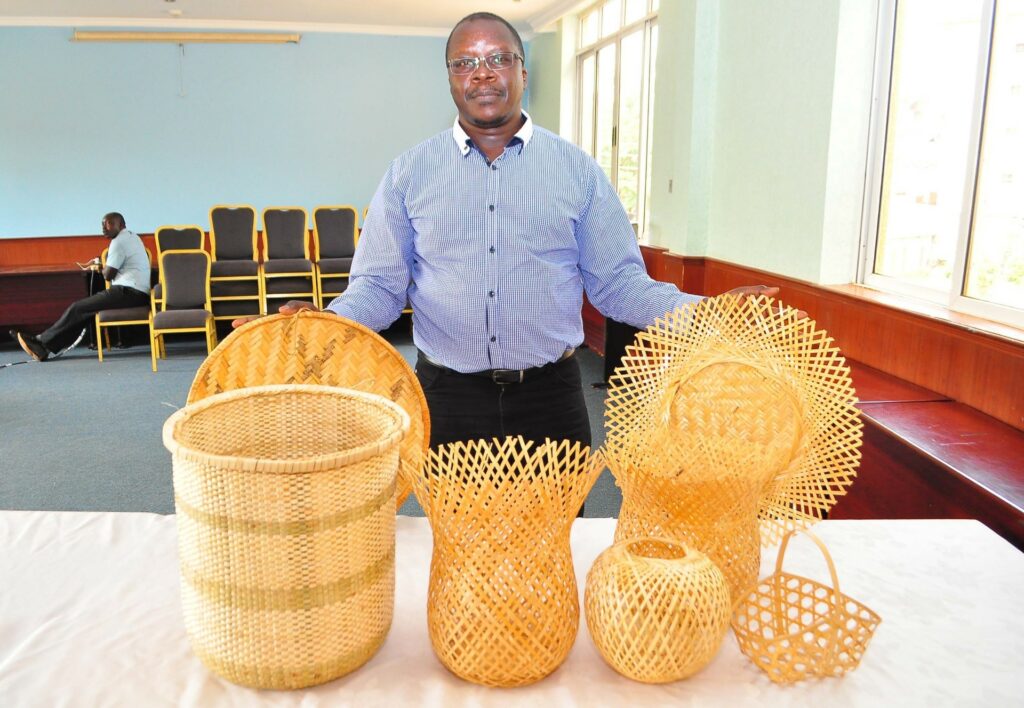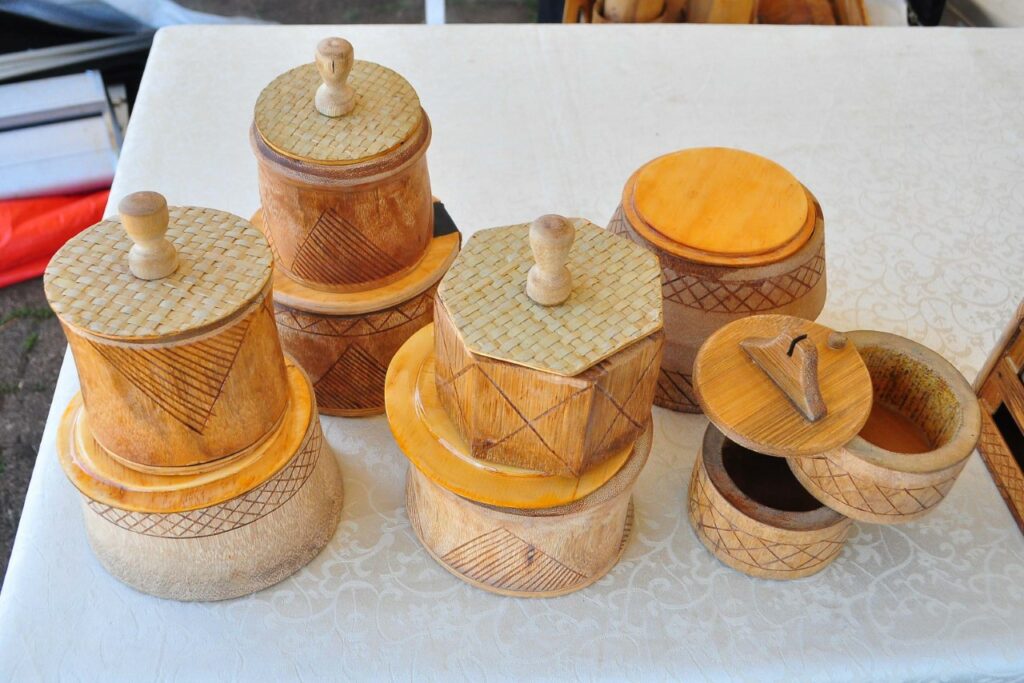By Shamim Saad
As Uganda fights to curb deforestation and the effects of climate change, bamboo has been identified as a strategic agro-ecological plant to redeem forest coverage, and support sustainable use of trees for wood-fuel, construction and crafts in Uganda.
Already, the country’s forests watchdog, National Forestry Authority (NFA) has mapped regions for growing at least 25 of the 150 exotic species, that are believed to do exceptionally well on the African continent.
The crop is believed to be one of the most sustainable ways of reversing the worrying climate change trends, while at the same time creating jobs and growing the economy.
Currently, according to NFA, cutting down trees for timber and fuel is among the largest drivers of forest loss, although Bamboo has now been identified as having the potential to relieve forests of this pressure.
According to NFA, the switch to Bamboo was suggested after a site- species matching study conducted by watchdog, in collaboration with the International Bamboo and Rattan Organisation (INBAR) and National Forestry Resources Research Institute (NaFORRI) in 2022.
INBAR’s Regional Manager, Selim Razar says the move will help restore the country’s forest cover, which has been reducing over the years, having fallen from 24% cover in 1990 to approximately 12.5% presently.
He says since the grass is easy to grow, stronger than wood, and sprouts quickly after harvesting, it will most likely catch the attention of loggers, if given due attention.
He says Bamboo grows on marginal land and only takes about three years to mature, in addition to being good at absorbing carbon dioxide – one of the greenhouse gases warming the planet.
“The plant can be harvested over one’s lifetime if handled well, and a good income generator, that can ably supplement the country’s efforts to reduce household poverty,” he says.
It should be noted that over the last 30 to 40 years, Uganda’s forest cover has faced increasing threats from growing human population, demand for forest products for domestic and industrial use, expansion of agricultural land, illegal settlements and weak forest management capacity.
But in 2020 the country developed a national Bamboo Strategy and Action Plan, in which the government aims to use bamboo in rehabilitating 375,000 hectares of degraded land by 2029 to protect the environment and provide income to rural communities.
According to the plan, emphasis has been put on areas with fragile ecosystems, such as mountain slopes, lakeshores, riverbanks and wetlands because bamboo is highly effective at controlling soil erosion.
Currently bamboo covers more than 55,000 hectares of land nationwide and about 50,000 bamboo seedlings are distributed by Uganda’s National Forestry Authority each year.
In the short run to 2024, the government’s target is to plant 70,000ha of bamboo and restore 15,000ha of natural bamboo. Between 2025 and 2040, the strategy envisions an additional 230,000ha of planted and 60,000ha of regenerated natural bamboo.
Razar says it is important for communities to know, which of the approved species is good for planting in their area, for the sake of maximizing yields.
“Such knowledge is vital in prioritizing and promoting bamboo farming for environmental, social, and economic transformation” Razar explains.
According to the INBAR study, African bamboo sector contribute 7% percent of the global bamboo resource lies in the African region, with total area coverage of over 2.8 million ha in six nations.
Among these, Ethiopia has 31.55% of the entire bamboo resource, followed by Senegal (14.49%) and Ghana (8.77%) (Bahru and Ding, 2021).
A total of 115 bamboo species are widely distributed among 48 countries in the African region, accounting for 7.3% of the global total in terms of species diversity and area coverage.
Razar says, despite the long history of bamboo resources in the African region, bamboo is widely used mainly for traditional applications such as housing, fencing, basketry, agricultural utilities, furniture, and fuelwood, with Ethiopia being the only African country with much progress in processing and utilizing bamboo.
The United Nations (UN) ComTrade database shows that the African continent imported bamboo products valued at $21m and exported $18m, representing 1.6% and 1.2% of the global imports and exports between 2014, and 2016.
He says, with the global bamboo market rapidly growing, African governments and the private sector have begun positioning themselves to commercialize bamboo.

Site-Species Mapping Approach
Through the Dutch-Sino East Africa Bamboo Development Programme, covering Ethiopia, Kenya, and Uganda, INBAR has since 2017 assisted initiatives geared towards making the bamboo economy more beneficial to the respective countries and their communities.
The National Project Coordinator, Dutch Sino East Africa Bamboo Development Program, Michael Malinga says their main objective is to empower communities to realize the untapped potential of bamboo as a source of income and livelihood to create green jobs and upgrade the value chain.,
“It is in this light that five Agro-Ecological Zones (AEZs) in Uganda were mapped. They include the Lake Victoria crescent, Southern Drylands, West Nile, Southern Highlands, and the Eastern Highlands. These are out of the nine AEZs where bamboo grows in forests and on private land,” Malinga says.
While addressing participants drawn from all AEZs, the Executive Director, NFA, Tom Okello noted the watchdog has launched the technical paper on bamboo species site matching which looks at the soils, topography, slopes, soil characteristics, PH, and salinity suited for the different bamboo species.
“We expect this report to be put in use immediately so that we can plant the right species at the right place and we get what we want out of it” he supposes.
Okello said Uganda’s population continues to grow and so does the demand for fuelwood and wood products. Agriculture is also expanding into natural woodlands and forests.
“The resulting deforestation exacerbates climate change and its impacts. Further, forest plantations are failing to keep pace with the demand for wood and wood products.
One promising option to arrest this challenge is to grow bamboo. Bamboo is fast-growing and can be selectively harvested over a long period,” he alluded, adding that: “Bamboo is not new to Uganda, and although most of the bamboo resource is in protected areas, adjacent communities have already explored its use for food, construction, craft materials, fuelwood, and other utilizations.”
According to the report, allowing the private sector, both smallholder farmers and industrial plantation companies, to play a major role is a great step towards realizing the untapped potential of bamboo.
However, with the introduction of exotic bamboo species to diversify the genetic pool, guidance on which species to select for specific agro-climatic conditions and commercial utilization is limited.
The report further states that knowledge and information on the growth performance of the different bamboo species introduced across the different agro-ecological zones (AEZs) in Uganda is insufficient.
This knowledge is vital in prioritizing and promoting bamboo farming for environmental, social, and economic transformation.

Species for Environmental Protection
According to the study based on the 3 growth parameters in three years, Bamboo vulgaris has been approved for growth in the Lake Victoria crescent, West Nile, and Southern Highlands.
This species should therefore be promoted in all the three AEZs for land restoration, river bank protection, and commercial utilization as fuel.
On the other hand O. abyssinica can grow well in both West Nile and the Southern Drylands, while D. asper does well in both the Lake Victoria crescent and West Nile.
B. polymorpha performs significantly better in the lake Victoria crescent than in the West Nile and should therefore be promoted in the lake Victoria crescent.
The growth performance of two- year-old D. asper in both the lake Victoria crescent and West Nile was compared to its known growth performance in literature and therefore should be promoted in both AEZs.
Social and Enterprise Interests
Okello says there is increased interest among farmers, public and private entities to cultivate bamboo for environmental and socioeconomic benefits.
He added that the development of the National Bamboo Strategy for Uganda is therefore a useful guide to building the bamboo economy.
“Due to improved awareness, small-scale bamboo farming and commercial plantations have emerged in the country. We have one company which is now exporting bamboo fiber to Europe and have so far sold their first container of bamboo fiber recently,” he highlighted
He says that there is need to diversify the forest products and move away from the traditional timber, in order to add value to the forest products.
“Most of the farmers are not ready to engage in bamboo value addition. They just want to supply to the bamboo industry,” he said
However, Okello noted that there are some bamboo enterprises that are getting established in the L. Victoria crescent because of the anticipated demand.
Bamboo products
The Chief Executive Officer GreenCane Innovations, Kisoro Herbert Mugisha, says bamboo is the only tree that you have to cut for it to survive.
“Bamboo should get out of the clamp so that we create space for shooting. Literally, bamboo above three years cannot shoot. It has to get out of the clamp for utilization so this translates into sustainability and keeps regenerating. The future of the world is in bamboo so we should go into bamboo production,” he said
Mugisha pointed out that with huge reliance on indigenous skills, bamboo artisans in Kisoro and Kabale make baskets, trays, and beehives.
However, a few of them were trained by United Nations Industrial Development Organization (UNIDO) and organized into the Kisoro Bamboo Handcraft Cluster Cooperative Society.
The cooperative comprises 118 people from 3 sub-counties (Kanaaba, Nyarusiza, and Muramba) who were trained to produce different bamboo products.
He stressed the main challenge to commercializing bamboo in the region as people still relying on the Echuya Central Forest Reserve to obtain bamboo raw materials.
“Access to the forest is highly restricted, and most of the time, bamboo is illegally extracted. Access to planting material is also a hindrance to those interested in domesticating,” he said
He however noted that currently, bamboo is gaining popularity, as people get to understand its value and chain of products.





